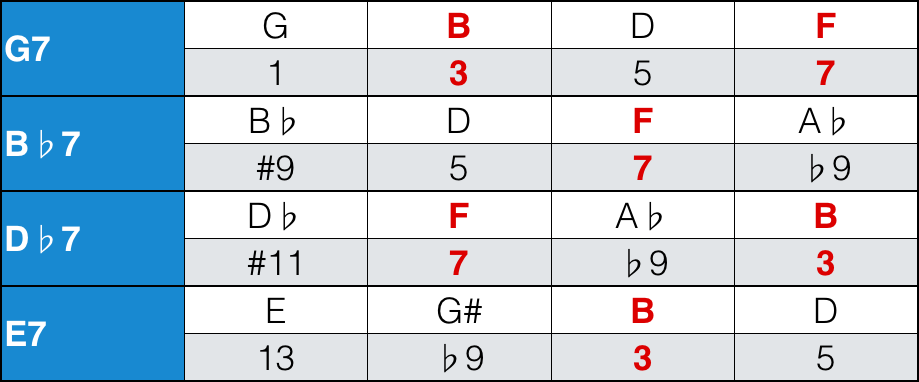ii-V-I
A ii-V-I is the most commonly use chord progression in Jazz; you’ll find it in almost every (Tonal) Jazz Standard. It provides a strong sense of finality and establishes the the tonic chord. This is because we are moving through a functional Pre-Dominant → Dominant → Tonic chord progression. And that V-I Perfect Cadence at the end sounds like a full stop at the end of a sentence.
But you don’t have to resolve to the I chord for a ii-V to sound ‘final’. You can resolve to any other chord and it will still sound like an ending. This is the idea behind deceptive cadences. For example, you could play a ii-V-vi or a ii-V-IV and it will still sound strong and final.
Because ii-V-I’s are so common and overused, they can eventually sound a little bit boring and plain. So we can reharmonise a standard ii-V-I with a different ii-V substitution, but still keep the original I chord. This makes the progression more interesting while still retaining that strong ii-V movement which still acts as a full stop at the end of the phrase.
ii-V Substitution
As well as the regular ii-V-I, some common ii-V substitutions include:
- The Backdoor Progression – which is used in many Jazz Standards
- The Tritone Substitution – which is very widely used
- The Frontdoor Progression – a name I made up and a progression that is less widely used
These are outlined below.

There are a couple of interesting points to note about this progression:
- The Frontdoor Progression is a ii-V leading to Am7 (the I) but instead resolving to the CMaj7. Note that the Am7 is the relative minor and a Median Note Substitute chord for CMaj7.
- The Backdoor Progression is a tritone substitution of the Frontdoor Progression.
- This means all these chord progressions are a ii-V or a tritone substitution of a ii-V leading to the I or a median note substitution of the I.
- Also notice the root of each dominant chord creates a diminished arpeggio: G B♭ D♭ E
Dominant Diminished
So Dominant chords a minor third apart from each other are all related. There is a number of ways to think about this:
- If we look at the notes that make up each chord and relate them back to a degree of the G7 chord we notice that they share many of the same notes, including guide tones, or are otherwise available tensions of the chord G7.

- Alternatively, a common substitution for a dominant chord is the #Vo7 chord.
- So a substitution for G7 would be G#o7
- Notice that the G#o7 is a:
- Rootless G7♭9
- Rootless B♭7♭9
- Rootless D♭7♭9
- Rootless E7♭9
For more information about this curious fact check out my lesson on the diminished scale.
Pick a Chord, any Chord
A ii-V provides a strong sense of finality no matter what key or what chord you’re resolving to, as long as you use smooth voice leading. For example, you could have:
B♭m7 E♭7 | CMaj7 ||
In this lesson we restricted out attention to ii-V’s. But, in fact, any chord can resolve to any other chord if you use appropriate voice leading. This is an idea we will come across again when we discuss non-functional chord progressions in future lessons.